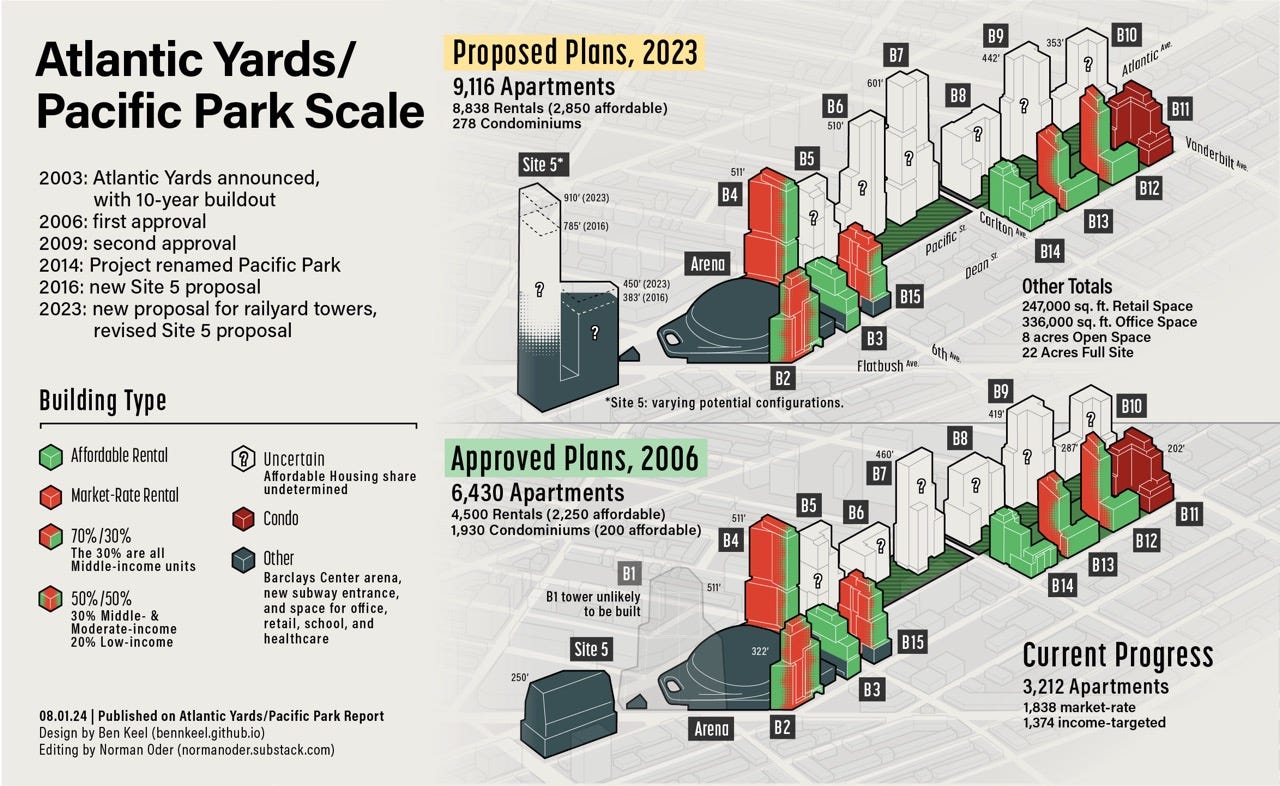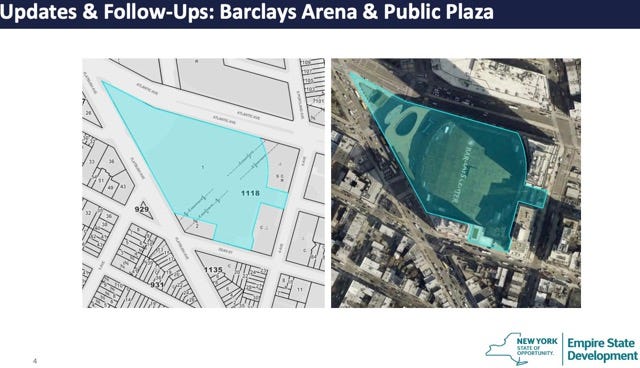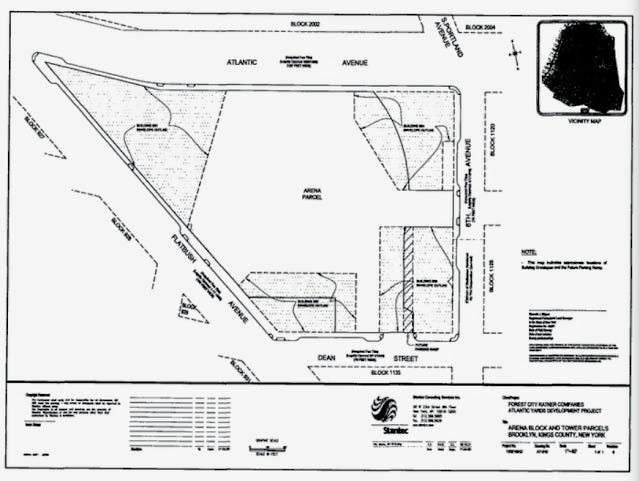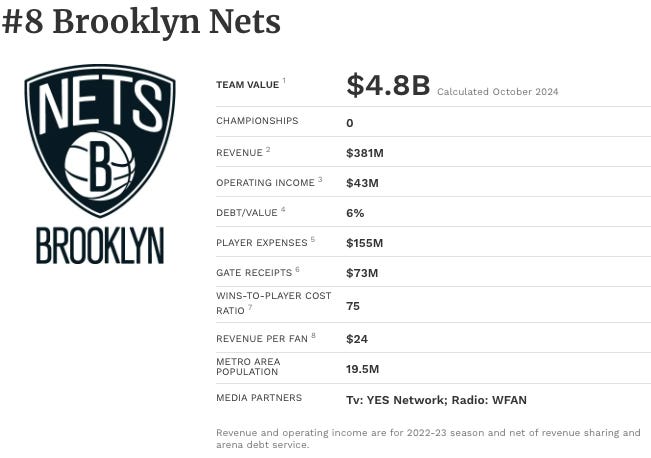Weekly Digest: Community Engagement or Developer Engagement?
Set to approve "permitted developer," Empire State Development says it will launch outreach regarding six tower sites over railyard. But Related's already been lobbying.
This digest offers a way for people to keep up with my Atlantic Yards/Pacific Park Report blog, as well as my other coverage in this newsletter and elsewhere.
A meeting this week of the advisory Atlantic Yards Community Development Corporation (AY CDC) was preceded, as usual, by a request for public comment on agenda items due a day before the meeting. Clairvoyant, anyone?
Of course the agenda was released barely two days before the meeting and was typically opaque. Such non-transparency is standard operating procedure for Empire State Development (ESD), the state authority that oversees/shepherds the project.
So I drew the wrong conclusion from the agenda item “Community Engagement.” I thought it meant a report back on the notably non-transparent Quality of Life meeting held a week earlier.
Nope, it meant that, because ESD was ready to approve a new “permitted developer” for the six tower sites over the working Vanderbilt Yard, it’s also ready to hire a community engagement consultant to solicit feedback on the project’s future.
About community engagement
What might that mean?
Well, ESD executives were fairly vague, but a draft document on community engagement it prepared last year, which I acquired via a Freedom of Information Law (FOIL), sought “community feedback and vision” on topics including “affordable housing preferences, desired community amenities, priorities for open space and public realm, and non-residential space usage.”
That’s not definitive, but it implies that the big question—an increase in the development’s size—is not up for much discussion. Nor did ESD sound interested in enforcing the penalties due in May 2025 for the failure to deliver 876 more required units of below-market affordable housing.

Remember, as I reported, current master developer Greenland USA—about to lose those six development parcels after a foreclosure action—last year proposed to supersize the project, adding 1 million valuable square feet to those railyard sites.
(That’s worth several hundred million dollars and, presumably, would’ve helped pay for the costly platform that’s a precursor for vertical development.)
It’s highly likely that Hudson Yards developer Related Companies, the biggest player in the pending joint venture to take over railyard development, has, in its lobbying, been talking to city and state officials about the contours of the project—despite denials by ESD officials.
About the permitted developer
ESD executives said that approval of the pending joint venture could happen within weeks. (Would it be mentioned at the monthly meeting Nov. 21 of the parent board?)
The joint venture involves the U.S. Immigration Fund (USIF), a “regional center” that recruited immigrant investors under the EB-5 investor visa program; Fortress Investment Group, a private equity fund known for seeking upside in distressed assets; and Related, which has the expertise to build.
The development sites were offered as collateral by Greenland USA, for now the project’s master developer, for $349 million in EB-5 loans, of which about $286 million remain unpaid. (USIF is not “the lender,” though that's bad shorthand. Rather, thanks to advantageous contract language, it controls the debt.)
Only in the public comment period at the AY CDC meeting did a key question get asked. Prospect Heights resident Robert Puca asked if ESD had investigated ‘the USIF’s Nicholas Mastronianni II: “I'm still confused how he could be considered to represent a permitted developer,” given his criminal record, which includes felony charges.
“We're still looking at it,” said ESD lawyer Matthew Acocella. “But based on the information we've gotten and based on the structure of the [joint venture], we don't see any any bar to proceeding with this joint venture as the permitted developer with Related and USIF.” That, as I wrote, was questionable.
From this newsletter
Nov. 12: Who Controls the Arena Plaza? New York State's Explanation Left Something Out.
Indeed, complex transactions involving the (unbuilt) flagship tower and the Barclays Center operator were envisioned. Shouldn't BSE Global pay to gain a permanent plaza?
Note the slide below, distributed by ESD at a previous meeting of the Atlantic Yards Community Development Corporation. It suggests that the arena company, BSE Global, fully controls the plaza, stretching to the tip of Atlantic and Flatbush avenues.
However, the March 4, 2010 Declaration for the arena site contains the graphic below. The triangle at the western end is labeled “Building One Envelope Outline.” That’s B1, not the plaza.
However, it’s not three-dimensional;, the B1 parcel starts at a horizontal plane at an elevation of 198.7 feet. That would allow for an atrium below known as the Urban Room, which was once slated to house entry to not just the arena but also the office tower above and the transit hub below.
The arena company would control the branding of the Urban Room, but that would be far less valuable, for both promotions and operations, than the plaza. That bolsters the argument that they should pay for the plaza.
From Atlantic Yards/Pacific Park Report
Nov. 13: Agenda for Atlantic Yards Community Development Corp. meeting tomorrow vague as always, includes update on (blinkered) "Community Engagement." I actually got that wrong, as noted above.
Nov. 14: Forbes says value of Brooklyn Nets boomed 25% in a year, to $4.8 billion, despite limited profits. That’s the second-largest rise in NBA, and a sign of the upside of the league in Brooklyn.
Credit the investment by Julia Koch and her family, buying 15% of BSE Global. That’s another argument that BSE should pay for making the plaza permanent.
Nov. 15: Related's new joint venture is about to qualify as "permitted developer" to build on six railyard sites. State officials claim the project contours are not under negotiation. That’s doubtful.
Nov. 16: State authority plans "Community Engagement" regarding six towers to be built on platform sites. Won't developer Related's lobbying establish parameters? My coverage here may sound cynical, but hey, I’ve been around.








